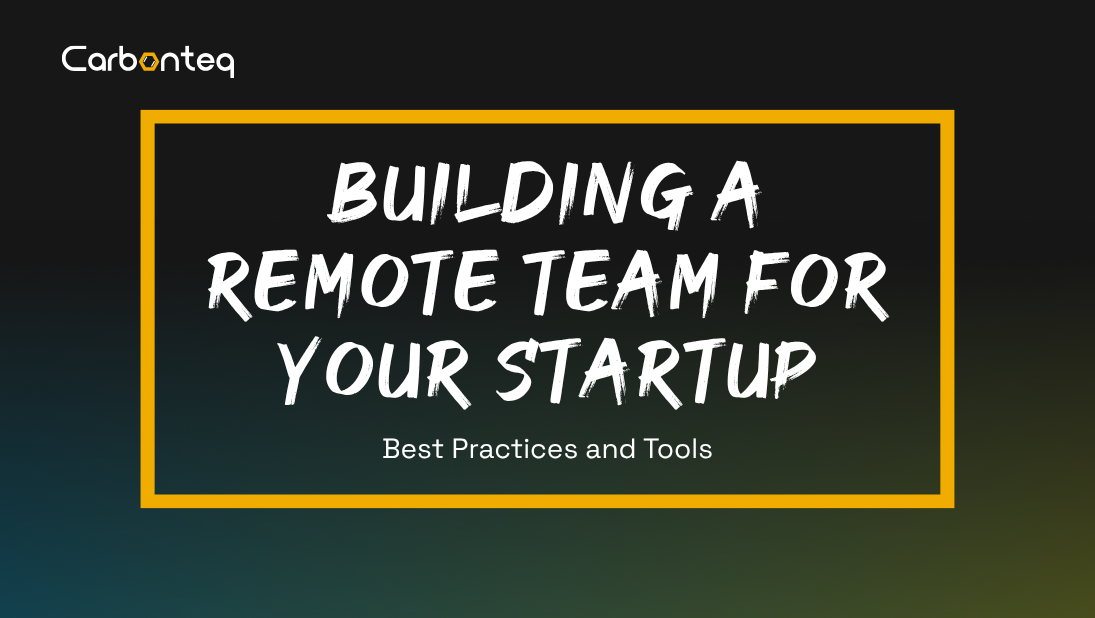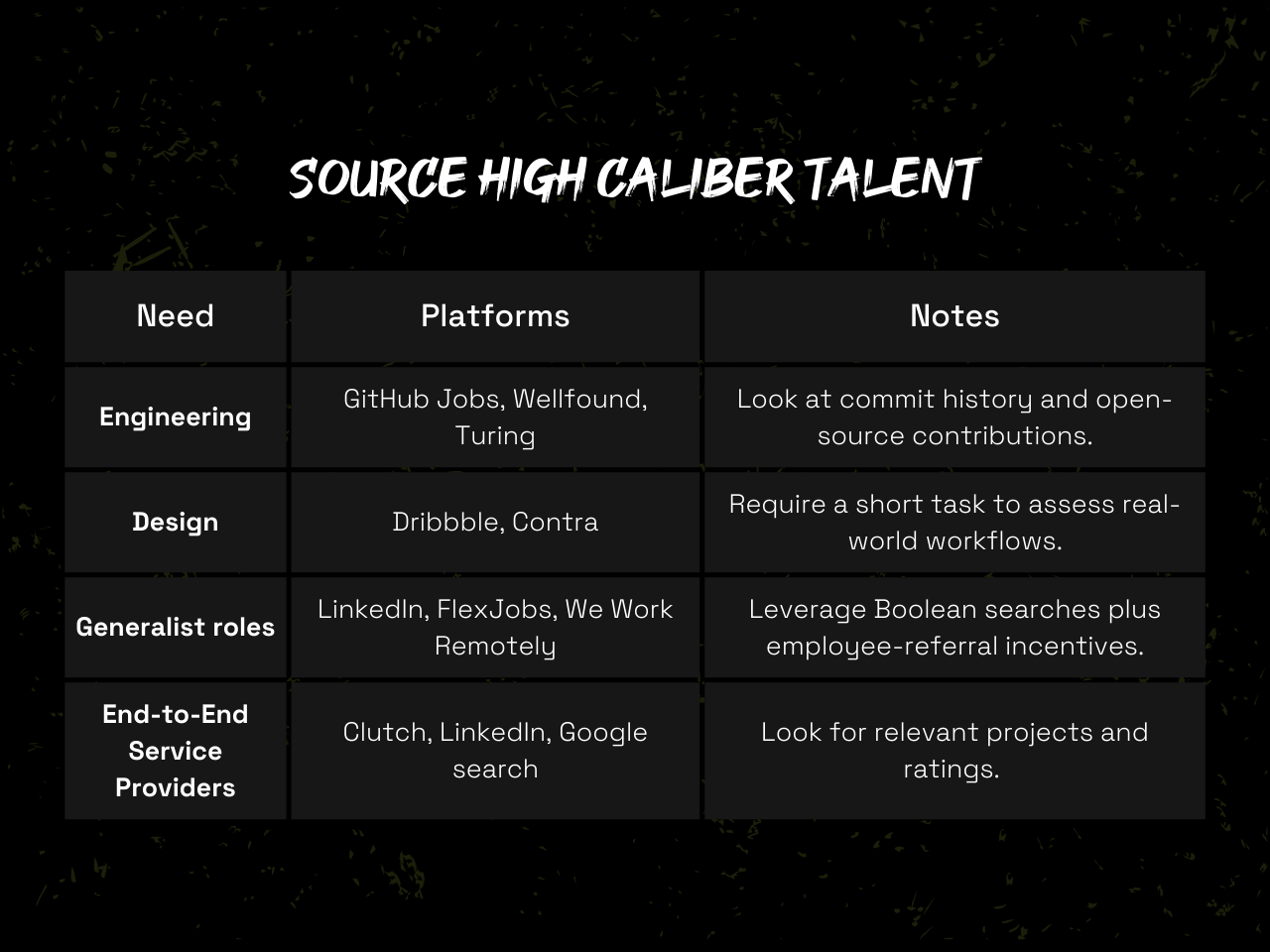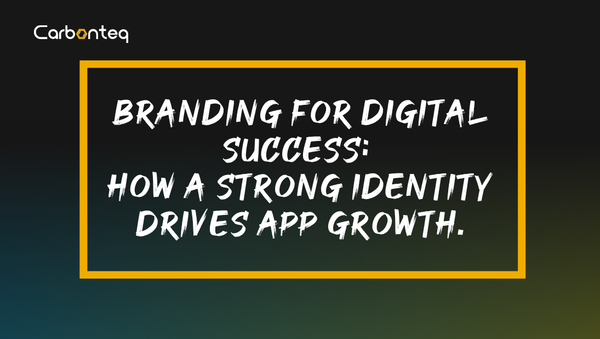Building a Remote Team for Your Startup: Best Practices and Tools

Hiring remotely used to be a tactical workaround; today it is a core strategic lever. Startups that master distributed work tap into deep talent pools, stretch their burn rate, and maintain resilience under market turbulence. Yet assembling a high-performing remote team is more than opening a Slack workspace and posting jobs on the internet. It demands deliberate systems, purposeful culture-building, and a toolkit that turns miles into milliseconds. This guide distills proven practices and curated tools so founders can build, manage, and scale remote teams with confidence—without sacrificing speed or cohesion.
Why Remote Teams Give Startups an Edge
Global talent without geographic limits
- Hire niche specialists (e.g., low-latency backend engineers or Figma-savvy UX writers) unavailable in your local market.
- Create around-the-clock coverage by distributing roles across time zones.
- Diversify perspectives, leading to more inclusive products and broader market fit.
Capital efficiency and extended runway
- Lower salary benchmarks in emerging tech hubs reduce payroll pressure.
- Remote-first operations slash office rent, utilities, and relocation costs, yielding a lean operating model.
- Variable compensation structures—contract, part-time, or fractional leadership—let founders buy only the expertise they need.
Laying the Operational Foundation
Clarify roles, outcomes, and accountability metrics
Define each role in terms of outputs, not hours online. Pair every key result with a source-of-truth metric (e.g., backend latency under 200 ms). Publish these in a shared workspace so expectations are transparent.
Create a robust, asynchronous-first communication framework
- Channel taxonomy:
- Real-time: Slack “Urgent” channel, Zoom for face-to-face decisions.
- Async: Threads, Notion docs, Loom videos for context-rich hand-offs.
- Response-time SLAs: Specify, for example, “24 h on non-blocking questions; 2 h on blockers.”
- Documentation lighthouse: Every decision, design spec, or retro summary goes into a centralized knowledge base. Future hires ramp faster; tribal knowledge loss evaporates.
Hiring and Onboarding Remote Talent
Where to source high-caliber candidates

Designing a rigorous yet humane interview process
- Structured rubrics: Each interviewer scores against predefined criteria, mitigating bias.
- Work-sample tests: Short, compensated projects mirror daily tasks.
- Culture-add conversations: Ask scenario questions (“Describe a time zone conflict you navigated”) to test remote readiness.
Structured onboarding for fast ramp-up
Day 0 access checklist—email, repos, credentials—prevents idle time. Pair every new hire with a buddy who hosts weekly check-ins for the first month. Provide a 30-60-90-day success roadmap aligned with their OKRs.
Engaging Specialized Service Providers for Niche Needs
Modern founders don’t always need to build every capability in-house. Hiring a boutique service provider that already lives and breathes your technology stack or industry domain can compress timelines, de-risk delivery, and eliminate the overhead of nurturing a full employee cohort.
Why Niche Providers Make Sense
- Single-point accountability — One contract covers an entire outcome (e.g., “launch an Android MVP in 12 weeks”), sparing you multiple employment agreements and probationary periods.
- Pre-vetted expertise — Specialists arrive battle-tested, with playbooks and tooling tuned to the exact problem space—such as HIPAA-compliant data flows or high-frequency trading latencies.
- Elastic capacity — Scale work up or down as sprints ebb and flow without renegotiating headcount or worrying about bench time.
- Focus preservation — Founders spend their scarce mental bandwidth framing the core business problem, not interviewing another round of backend candidates.
Selecting and Managing the Engagement
- Define the problem in outcomes: Write a short problem statement (“We need a PCI-DSS-ready payments API integrated in eight weeks”) and success metrics (e.g., transactions processed per second, audit pass rate).
- Assess domain track record: Review case studies, request references in a similar regulatory or technical environment, and insist on a lightweight pilot before a long commitment.
- Govern by milestones: Break the scope into verifiable checkpoints—design spec, alpha release, load test—each tied to payment tranches.
- Embed knowledge transfer: Require post-project documentation and a live hand-off session to ensure your internal team can maintain or extend the delivered work.
When chosen thoughtfully, specialized providers function as plug-and-play momentum boosters: they solve tightly scoped, high-complexity challenges while your startup concentrates on product–market fit and customer delight.
Collaboration & Productivity Stack
Communication tools that reduce friction
- Slack or Microsoft Teams for quick sync and emoji-driven nuance.
- Zoom or Google Meet for high-bandwidth interactions.
- Loom for screen-recorded walkthroughs that eliminate repetitive explanations.
Project and knowledge-management platforms
- Asana, ClickUp, or Jira for sprint tracking and backlog grooming.
- Notion or Confluence as a single source of operational truth.
- Miro for whiteboarding and ideation when words fall short.
Time-zone coordination tactics
- Adopt the “follow-the-sun” model—handoff queues so progress continues 24/7.
- Use tools like Clockwise or Time Zone Butler to auto-propose overlap slots.
- Publish core-hours (e.g., 14:00–17:00 UTC) when all team members stay reachable.
Cultivating Culture and Engagement at a Distance
Rituals that build psychological safety
- Monthly demo days where everyone showcases a win or learning.
- Virtual coffee roulette pairing random colleagues for 15-minute chats.
- Async “kudos” channel celebrating micro-successes in real time.
Continuous feedback loops and recognition mechanisms
- Pulse surveys via CultureAmp or Officevibe gauge morale.
- Quarterly 360° reviews encourage upward, peer, and self-reflection.
- Public OKR dashboards foster shared accountability and fair recognition.
Legal, Compliance, and Payroll Essentials
Employment classifications and cross-border contracts
Misclassifying a full-time contributor as an independent contractor risks fines. Consult employment counsel or rely on an Employer of Record (EOR) service in each jurisdiction to issue compliant contracts and handle statutory benefits.
Payroll, taxes, and benefits: specialist platforms
- Deel and Remote automate localized payroll, withhold taxes, and manage equity in multiple countries.
- Papaya Global offers aggregated dashboards for cost forecasting across regions.
- Health and wellness stipends via SafetyWing keep benefit offerings equitable.
Measuring Performance and Iterating
Key metrics for remote team health
- Cycle time: elapsed days from task start to close.
- Sprint predictability: planned vs. completed story points.
- eNPS (Employee Net Promoter Score): early warning for disengagement.
- Documentation coverage: percentage of epics with linked specs.
Cadence for retrospectives and process refinement
Hold fortnightly retros focusing on process, people, and product. Convert insights into actions tracked in your PM tool. Every quarter, run a deeper operating-system review—do policies still serve current scale? Sunset practices that no longer add value.
Conclusion
A remote team can be a startup’s superpower or its undoing. The difference lies in intentionality: explicit roles, airtight processes, empathetic leadership, and a tool stack that amplifies—not hinders—human collaboration. By sourcing globally but onboarding locally, standardizing communication rhythms, and treating culture as a daily craft, founders unlock velocity without borders. Equip the team with platforms that automate drudgery and ensure compliance, then measure what matters and iterate. Done right, a distributed workforce stops being a cost saver and becomes a strategic moat—propelling your startup toward sustainable, scalable growth no matter where each teammate logs in.
Need a partner to turn your idea into a polished product? Carbonteq delivers end-to-end web and mobile development—so you can stay focused on the vision while our experts handle the build.



